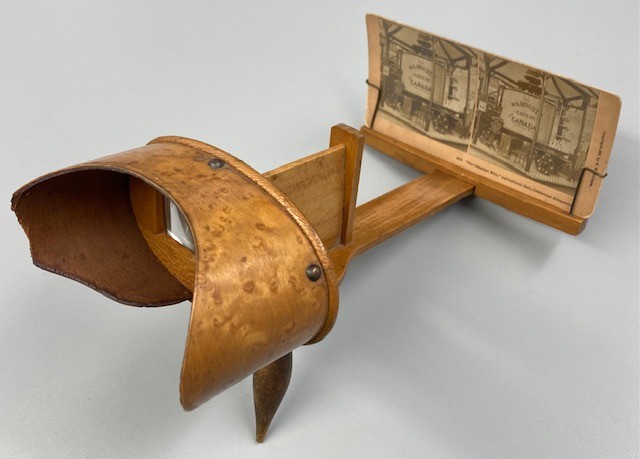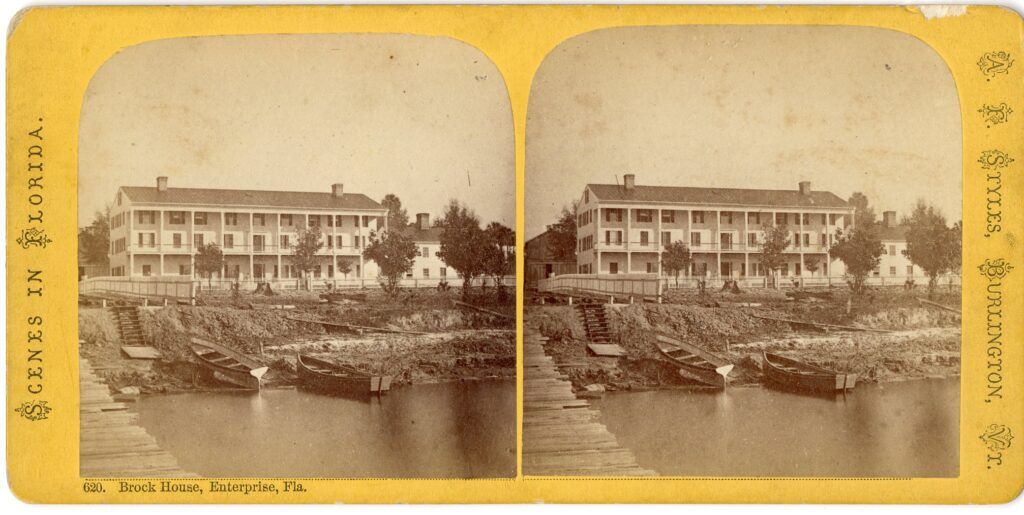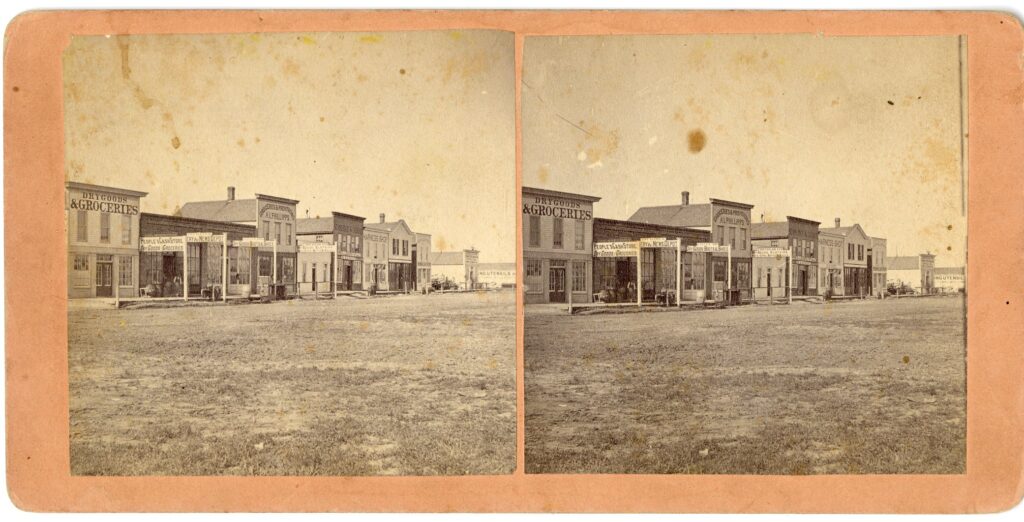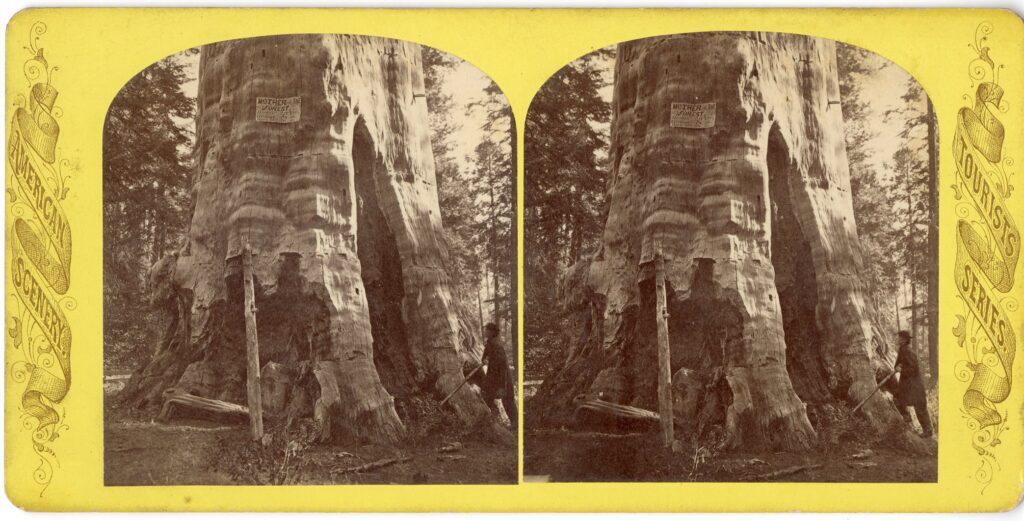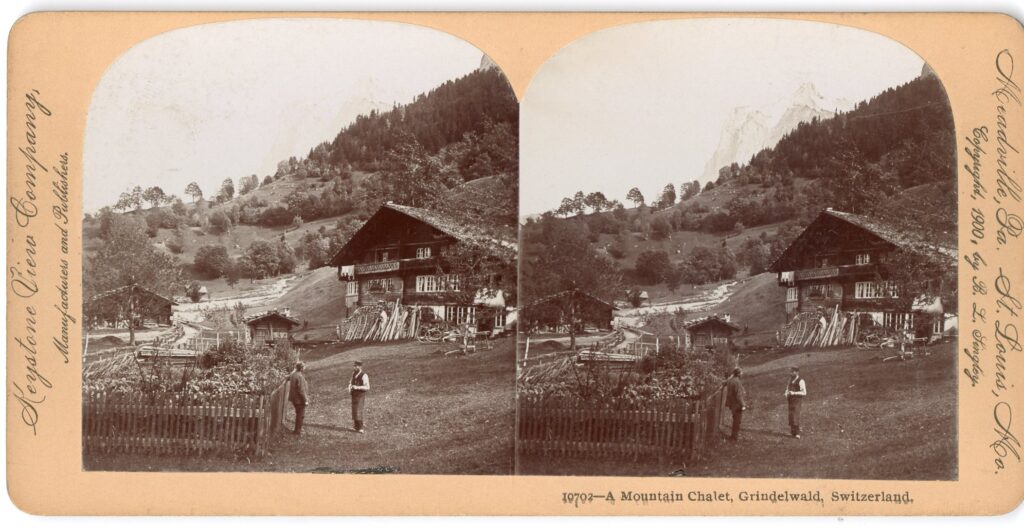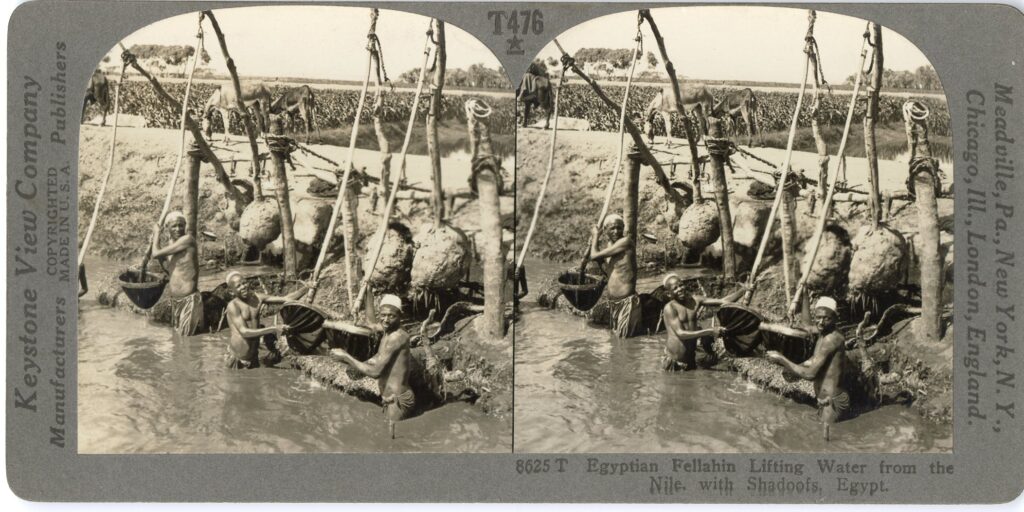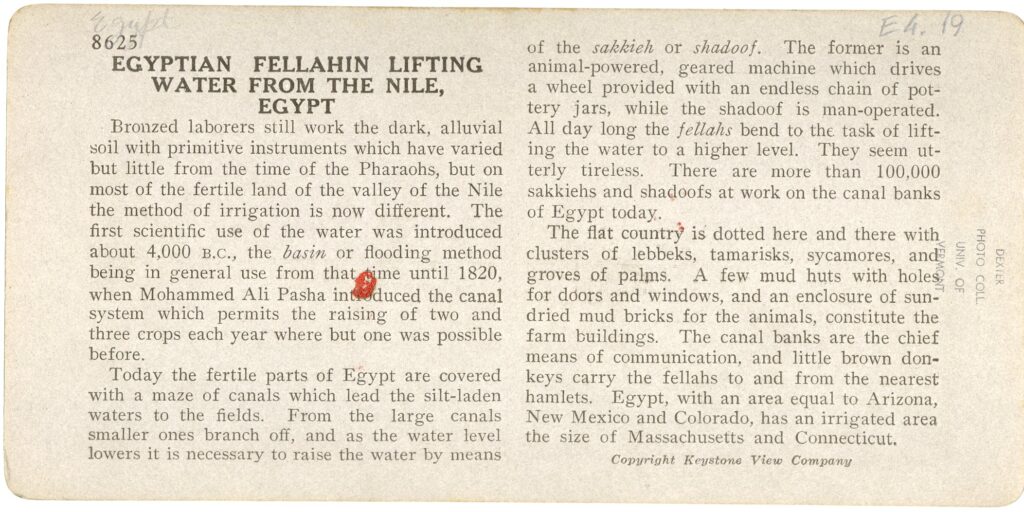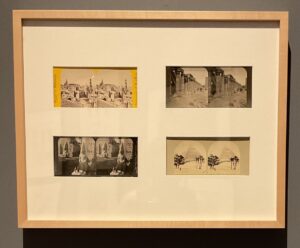 The “Art for Everyone” exhibition at the Fleming Museum of Art includes four stereographs of Egyptian scenes on loan from Silver Special Collections. The stereographs are displayed next to objects and prints selected and described by two of the museum’s collections and curatorial interns, including six prints from the monumental Description de l’Égypte published in the early nineteenth century. Fleming curators selected stereographic views of Cairo, the Temple of Luxor, ruins of an unidentified monumental building, and the pyramid at Giza to accompany the prints.
The “Art for Everyone” exhibition at the Fleming Museum of Art includes four stereographs of Egyptian scenes on loan from Silver Special Collections. The stereographs are displayed next to objects and prints selected and described by two of the museum’s collections and curatorial interns, including six prints from the monumental Description de l’Égypte published in the early nineteenth century. Fleming curators selected stereographic views of Cairo, the Temple of Luxor, ruins of an unidentified monumental building, and the pyramid at Giza to accompany the prints.
A stereograph is a pair of photographs or printed images mounted side by side on a rectangular card. Viewed through a stereoscope, the photographs appear as a 3-D image. Stereographs were extremely popular from the 1850s through the first decades of the twentieth century. They were produced by local photography studios and by large firms. Covering a wide range of content, stereographs provided entertainment and served as educational tools. While travelers might purchase stereographs as souvenirs, others viewed them to see distant places they might never visit.
Special Collections is fortunate to have an impressive collection of stereographs produced between 1860 and 1930. Librarian Jeffrey Marshall reported in 1990 that the collection consists of 3,000 Vermont views, 5,500 views of other states, and 6,000 views of foreign countries (Vermont History 1990: 37). The Vermont Stereograph Collection is heavily used and is indexed by place and subject. Many of the Vermont views are included in the Vermont Landscape Change image database. The views of other states and foreign countries are organized by country, subject, and in a few cases, by photographer. Some examples of the stereographic images taken by American and European photographers in other states and countries are presented below.
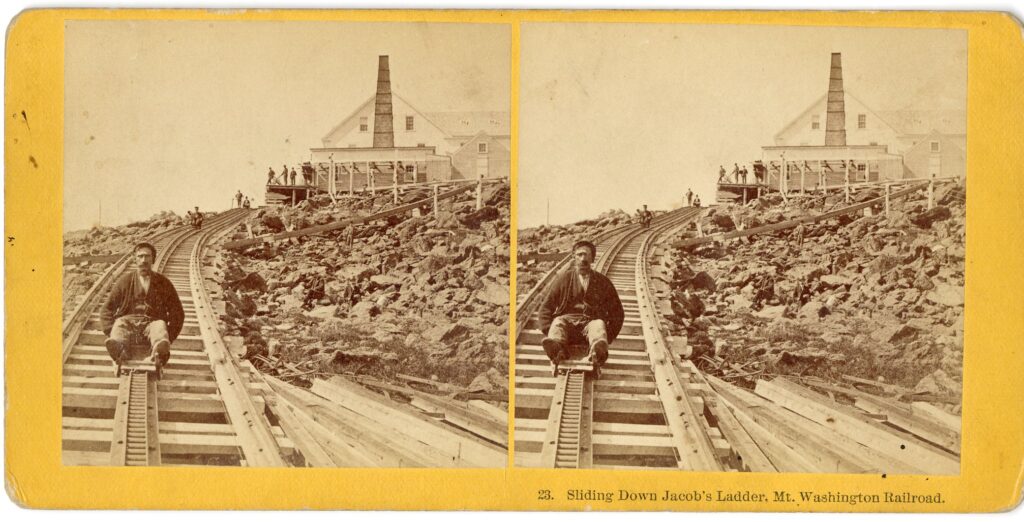 Photographed and published by the Kilburn Brothers of Littleton, New Hampshire, “Sliding Down Jacob’s Ladder” is one of many views featuring the Mount Washington cog railroad that took tourists to the summit of New Hampshire’s tallest mountain. Railroad workers are riding homemade slideboards through a particularly steep area on their way home at the end of a work day.
Photographed and published by the Kilburn Brothers of Littleton, New Hampshire, “Sliding Down Jacob’s Ladder” is one of many views featuring the Mount Washington cog railroad that took tourists to the summit of New Hampshire’s tallest mountain. Railroad workers are riding homemade slideboards through a particularly steep area on their way home at the end of a work day.
Burlington, Vermont photographer A. F. Styles published the popular Green Mountain Scenery stereographic series, but he also traveled to Florida to gather images for another series, Scenes in Florida. This hotel was located in the town of Enterprise, on Lake Monroe in central Florida.
Photographer and dentist Dr J. S. McAllister created this stereographic view of Columbus, Nebraska after he went west from Bristol, Vermont, where he also had a photography studio and a dental practice.
This stereograph was included in an American Scenery Tourist Series, From the Atlantic Ocean to the Pacific Ocean. The list of stereographs in the series on the back of the card lists this one as number 59, “Mother of The Forest–Big Trees, California.”
Published by the Keystone View Company, this is one of many stereographs that introduced armchair travelers to distant places, in this case, a mountain chalet in Grindelwald, Switzerland.
This Keystone View Company stereograph shows rural Egyptian farmers using well sweeps to lift water from the Nile River for irrigating fields. Keystone specialized in stereograph sets for educators. The company provided extensive descriptions on the back of their thick cards and published curriculum units to help teachers use stereographs in their classrooms.
Stereographs were sold individually and in boxed sets. We have several complete and partial boxed sets, including these two published by the Keystone Viewing Company.
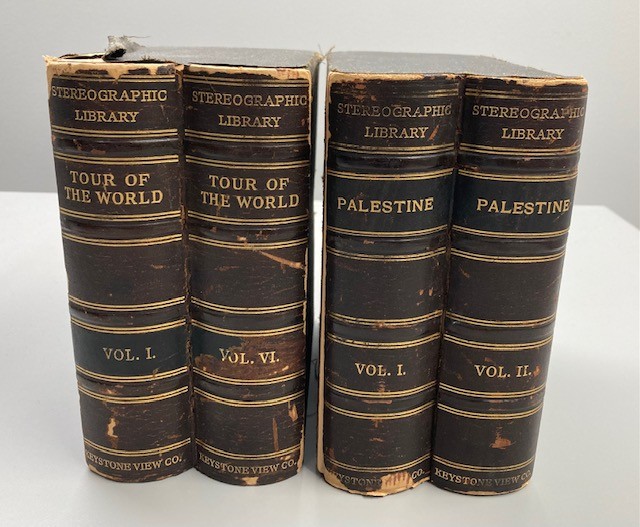
Visit the Fleming Museum to see the “Art for Everyone” exhibition and visit Special Collections to browse the stereograph collections.
-Submitted by Prudence Doherty, Public Services Librarian

